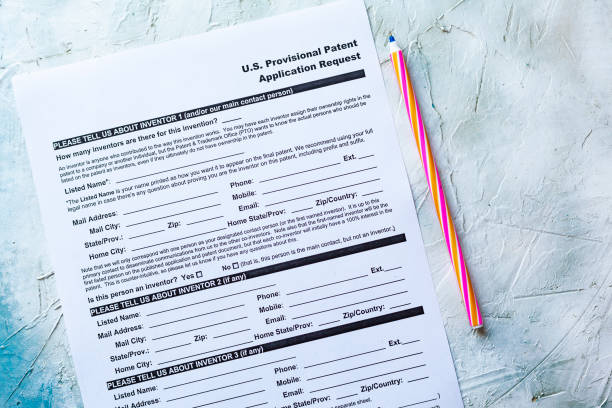If you have an idea and wish to monetize it, getting a patent is the most efficient way. Unfortunately, this can be costly so be prepared for that expense.
If you’re searching for an inexpensive way to patent your invention, filing a provisional patent application may be your best bet. While it only remains active for 12 months, filing this type of patent is much cheaper than applying for non-provisional protection.
Insufficient Disclosure
Many people believe that filing a cheap provisional patent application is the more cost-effective route to obtaining patent-pending status than preparing full patent applications. The low government fee for filing such an application may appeal to inventors with inventions with potential market value but no business plan that can justify the expense of filing for full patent protection.
However, a cost-effective provisional patent application carries the potential risk that the inventor won’t adequately disclose their invention when filing for patent protection. This could pose issues in the future if they decide to proceed with filing for a permanent patent application.

Inventors often neglect the significance of properly disclosing their invention in a patent application. To ensure that anyone with ordinary skill in the art can reproduce and utilize it without needing undue experimentation, inventors must describe their invention clearly and comprehensively in such a way that anyone with ordinary knowledge of the technology can easily make and utilize it without special knowledge or training.
But sometimes, inventors purposely leave out important details they believe to be common knowledge. This can happen especially with complex inventions or where there are multiple approaches to accomplishing a task.
These inventors often fail to consider the wider applications for their invention, which could mean they miss out on the full value of their innovation. This is especially true for inventions intended to combat COVID-19.
Furthermore, the USPTO will not grant a provisional patent application that does not contain a full disclosure. It may accept an application with partial disclosure but won’t grant it until an inventor submits a nonprovisional patent application.
Provisional patent applications are the fastest and cheapest way to gain patent-pending status for your invention, but they are not always the most effective solution. While they may seem like a quick fix, they can have serious repercussions if not described sufficiently for someone of ordinary skill in the art to make and use it without undue experimentation.
Investment of time and effort to fully disclose your invention is necessary for obtaining patent-pending status, which will continue to yield benefits long after you receive your issued patent. If you’re thinking about filing a cheap provisional patent application, don’t be hesitant to consult an experienced patent attorney for assistance.
Not Having an Attorney Help You
There are a number of websites advertising cheap provisional patent applications. These businesses provide services like writing the application for inventors and filing it at an economical price.
Unfortunately, these services often do not offer the level of care a professional patent attorney would provide. Furthermore, they may not be familiar with US patent law’s intricate details, leading to an inadequately prepared application that may not pass scrutiny during an examination.
Though it is possible to obtain a patent without professional assistance, it requires considerable effort and time. Furthermore, the application must be carefully written and adhere to all legal requirements. It’s essential to remember that the cost of filing a patent application may vary significantly depending on the invention’s type and complexity.

For instance, an invention that involves a straightforward mechanical device might only cost $900 to file a provisional patent application. On the other hand, more complex software-driven designs might necessitate paying over $15,000 for non-provisional patent protection.
Additionally, if you decide to file the application yourself, additional fees for professional drawings may apply. These drawings can add anywhere from $300-$500 onto the overall application cost.
In conclusion, filing a patent without the assistance of a patent attorney is generally not recommended for inventors. Doing so carries significant risk and could mean costly mistakes in the long run.
This is essential since applications must be written with sufficient detail to meet the written description and enablement requirements of United States patent laws. Furthermore, inventors must explain how their invention was made and how it functions.
If your application does not meet these criteria, your invention may not qualify for protection and cannot be patented. This could result in financial loss as your intellectual property rights will no longer be safeguarded and you could potentially lose them altogether.
No matter, if you choose to file your own application or hire a patent attorney, the most critical thing for you to remember, is that your initial step should always be an understanding of your rights. After that, discuss potential risks and advantages with your patent attorney so that you can make the best decision for your invention and guarantee adequate protection.
Not Understanding the Costs
A cheap provisional patent can be an efficient way to test your idea without spending a large amount of money. However, there are potential risks involved with this type of patent that should be taken into account before proceeding with its pursuit.
One of the primary concerns with a cheap provisional patent is that it may not provide enough protection for your idea. This could be especially true if your invention involves new technology or requires extensive process modifications.
Additionally, a cost-effective provisional patent application could potentially fail due to insufficient disclosure. This implies that an oversight in your application could prove disastrous for your business.
Therefore, consulting an attorney before filing your patent application is highly recommended. They can inform you of all costs involved and create a strategy to get your patent approved quickly.
The cost of a patent application is broken into two main categories: preparation and prosecution. The former involves the expense of creating your invention as well as crafting claims and specifications, while the latter covers filing the application with the USPTO.
Costs vary between applicants but can amount to a substantial sum of money. For instance, filing for a non-provisional patent application could cost as much as $17,000 in fees.
Another expense is the time it takes for a patent to be examined. On average, it takes around 1.5 years for them to finish reviewing your application after filing.
Additionally, a patent requires three maintenance fees in order to remain valid. These costs increase with each iteration and are due at 4, 8, and 12 years after the filing date.
It is essential to be aware that maintenance fees can accumulate quickly, especially if you choose to seek patent protection in multiple countries. Therefore, getting a patent in the United States first is recommended as this country offers one of the lowest costs and longest patent protection periods.
Finally, a low-cost provisional patent application can be an ideal solution for inventors without the funds to hire an attorney. This type of application provides valuable patent pending status for one year, giving you time to secure funding, earn money or pursue other plans that might justify paying higher fees with non-provisional applications.

Not Having a Plan
A recent trend in the patent business is to advertise provisional applications as being less costly than full non-provisional applications. This tactic is simply a marketing gimmick designed to take advantage of unsuspecting clients. While providing no actual benefit to them, it profits the patent attorney in the long run.
If you are thinking about filing for a cheap provisional patent, it is essential to have an action plan. Otherwise, your patent application could end up with flaws or no value at all – especially if you plan on selling your invention in the future.
It is essential to create a budget before filing for a provisional patent application, as the cost can be high if certain information needs to be included. These include the description and enablement of your invention; failing to describe it accurately could result in rejection by the United States Patent and Trademark Office (USPTO), even if you have paid for its preparation and filing.
This can be a major issue, as it will delay the process of having your patent examined and issued by several months. Therefore, I strongly advise clients against taking this route; instead, they should submit a full patent application directly.
However, many people who are told by an invention marketing company that filing for a cheap provisional patent is the way to go end up with patent applications that lack value. This is because the one-year period provided by such cheap provisional patents is insufficient time for developing and marketing an invention.
Unfortunately, such shortsighted thinking can have dire consequences for inventors. For instance, in Idenix Pharmaceuticals Inc v Gilead Sciences, a $2.5 billion verdict that the inventor won was nullified due to a provisional patent that failed to secure enough priority rights.
Conclusion
The concept of obtaining a cheap provisional patent has its merits and limitations. While it may seem like an attractive option for inventors or innovators with limited financial resources, it is essential to understand the potential risks and drawbacks associated with such an approach. The absence of professional guidance increases the risk of errors and omissions in the application. Inadequate documentation or improper disclosure of the invention’s details could lead to the patent being deemed invalid or lacking the necessary protection. Seeking professional guidance from a patent attorney or agent can ensure that the patent application is properly prepared, minimizing the risk of errors and maximizing the potential for obtaining robust patent protection. Ultimately, inventors should consider their specific circumstances and long-term goals when deciding on the most suitable patenting strategy for their invention.
